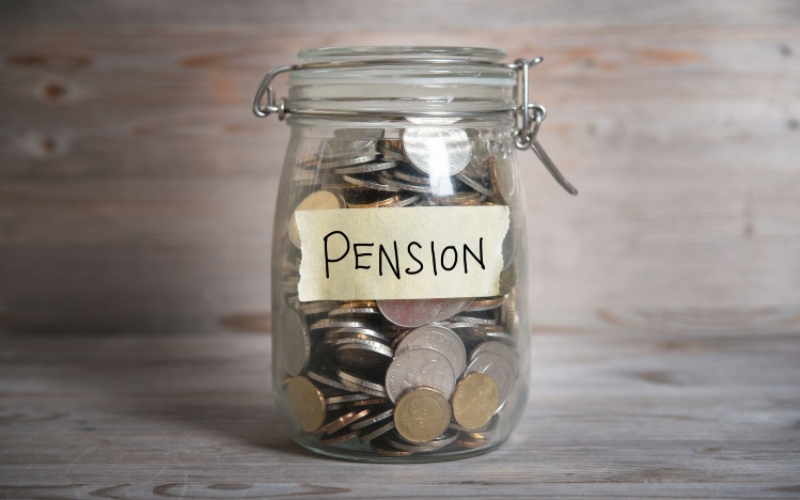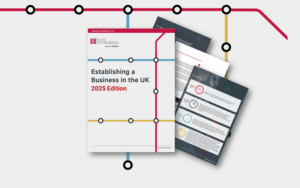UK pension plans and non-UK residents
The tax treatment of UK pension plans
The tax treatment of UK pension plans
Leaving a pension plan in the UK
It is not uncommon for someone to live in one country and to have a pension plan in another
Employees coming to the UK to work will usually find themselves automatically enrolled into their employer’s UK workplace pension scheme – only to leave the UK later. Equally UK residents may be looking to plan their retirement abroad.
But what happens to a UK pension plan if you decide to leave the UK?
Carrying on with contributions
There is no rule preventing non-UK residents from contributing to a UK pension plan, although most UK pension providers won’t be interested. The main deterrent is the absence of UK tax relief on the contributions paid, yet the retirement benefits remain firmly within the scope of UK tax.
The (limited) exception is that up to £3,600 gross per year can continue to be paid personally to an existing UK pension plan for up to five tax years after leaving the UK with basic rate (20%) tax relief given via ‘relief at source’, if that is how the existing plan works.
Contributions to, and/or ongoing active membership of, a defined benefits pension scheme while non-UK resident will be subject to the annual allowance.
Investment growth
Pension funds grow free of UK Income and Capital Gains Tax for residents and non-residents alike.
Retirement (and/or death)
UK pension tax rules do not discriminate between residents and non-residents when it comes to the timing, form and UK taxation of retirement and death benefits paid from a UK pension scheme. Only a ‘double tax agreement’ might affect the UK’s right to tax retirement and death benefits.
UK retirement and death benefits, as of September 2024 are as follows:
- Retirement benefits can be taken from age 55, rising to age 57 in April 2028
- Within limits, 25% of a UK pension plan can be taken tax free; many people will take the full allowance as an up-front lump sum, but there are variations on the theme
- Any withdrawal over the tax-free lump sum allowance is subject to UK Income Tax
Taxable pension income payments are subject to PAYE with UK Income Tax being deducted at source without regard to residence. The UK pension provider has no choice on the matter but to deduct UK tax in accordance with the PAYE tax code available, applying an emergency tax code to the taxable payments until HMRC issues a revised tax code.
Double tax agreements
You might not be a UK resident when you receive a pension payment but, in isolation, merely being non-UK resident does not exempt the payment from UK tax.
If you are non-UK resident and tax resident in another country, the UK and the other country will almost certainly have in place a double tax agreement (DTA) which will override the local tax laws and determine which country has the right to tax income, gains, etc. Most, but not all, DTAs state that pension payments (lump sum and income) are taxed in the country of residence. Even then, the DTA might mean that the UK retains the right to tax retirement benefits paid from certain UK public sector pension schemes.
Being tax resident elsewhere does not preclude you from also being considered UK resident should you spend extended periods living and working in the UK or retain a home in the UK solely for that purpose.
If you are a non-UK resident when a payment is made and the relevant DTA means the other country has the taxation rights, you would apply to HMRC for a refund of any UK tax deducted. The application for UK tax exemption is normally countersigned by the tax authority of the host country to confirm you are resident there.
UK temporary non residence rules mean that if you become a UK tax resident again before five full UK tax years have passed, and should the DTA have exempted you from UK tax on aggregate payments of £100,000 or more in that period, you might be liable to UK tax on the full aggregate amount (not just the excess over £100,000) on return to the UK.
DTA relief from UK tax is not a given. Some DTAs treat lump sums and pension income in different ways; others don’t mention lump sums at all.
In some cases, DTA relief is only available if the UK source pension payments are subject to tax in the country of residence.
Others will see-saw between the two countries before a ‘winner’ eventually emerges.
As a safety net, where both countries have a taxing right, most DTAs will give a local tax credit for any UK tax paid.
Given the permutations possible, we recommend you obtain advice specific to your circumstances.
‘Lump sums’ – a warning
Be careful if you live in a country where the UK DTA allows the UK to tax UK source pension lump sums. Either because that is what the DTA explicitly provides, e.g., Switzerland and USA, or the DTA does not mention lump sums e.g., Australia.
We are aware that HMRC is reviewing its guidance on what constitutes a pension lump sum, moving towards:
- A pension lump sum is any payment that is not pension income, and
- Pension income is a series of regular payments of equal amounts (or increasing annually by a defined rate) that is capable of being maintained for at least five years
That being so, any occasional ad hoc income withdrawal is likely to be considered a lump sum for DTA purposes, notwithstanding it is taken from an income drawdown account and, where the DTA allows the UK to tax lump sums, HMRC will argue the UK has a right to tax the payment.
However, as of September 2024, HMRC’s revised guidance has yet to be published.
Testing the waters
Most DTAs will award the taxing rights on all UK source pension payments, including pension lump sums to the country of residence.
It is not possible to apply for so-called ‘treaty relief’ on a particular UK source of taxable pension payments until that source has been established. That is, at least one taxable pension income payment has been made.
You may be reluctant to take a substantial pension income withdrawal, with UK tax of up to 45% deducted from that, before applying to HMRC for treaty relief. In which case, we suggest ‘testing the waters’ by taking a small one-off income withdrawal (£4,000 gross, for example) which will then serve as the platform for applying for treaty relief. If your application is accepted, HMRC will issue a ‘nil’ tax code to that UK pension provider; and refund any tax deducted from the initial withdrawal. You are then free to withdraw the balance from that particular pension plan without UK tax being deducted at source.
The application form for treaty relief is countersigned by your local tax authority before being sent on to HMRC. HMRC typically takes six months to process the claim.
Would you like to know more?
If you have any questions about the above, please get it touch with your usual Blick Rothenberg contact or Tomm using the form on this page.
We look at the options for transferring the UK pension fund to a non-UK pension scheme in our insight: UK pension plans and non-UK residents – transferring a UK pension fund overseas.
Dislaimer:
This article is intended to give you an insight into the tax treatment of UK pension plans, primarily from a UK perspective, based on our understanding of legislation in force as of September 2024.
It is not a comprehensive technical paper and should not be relied upon in deciding what to do with yours.
Please note that we cannot provide investment advice and you should consider seeking advice from an independent financial advisor before committing to any course of action that affects your investment portfolio.
Contact Tomm

You may also be interested in

Pension tax-free lump sums

Pension contributions













